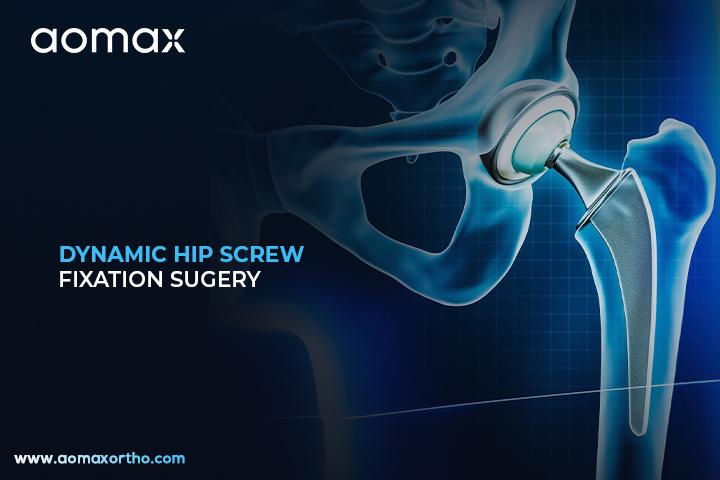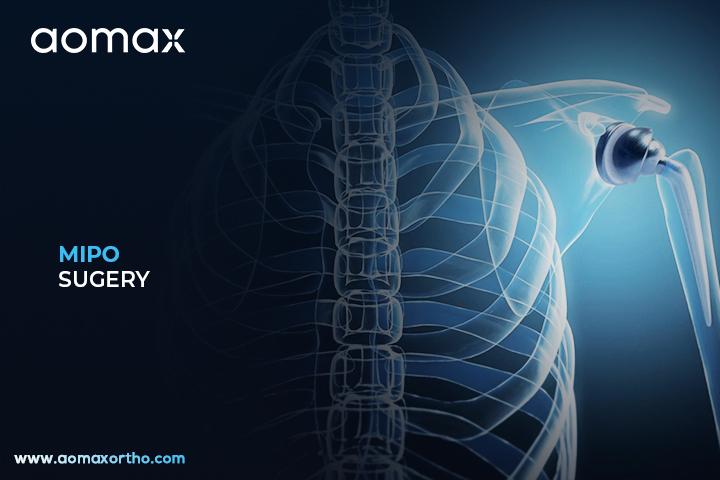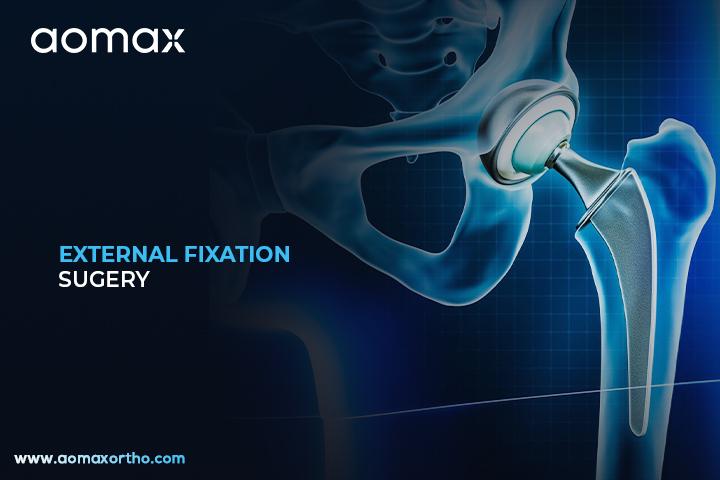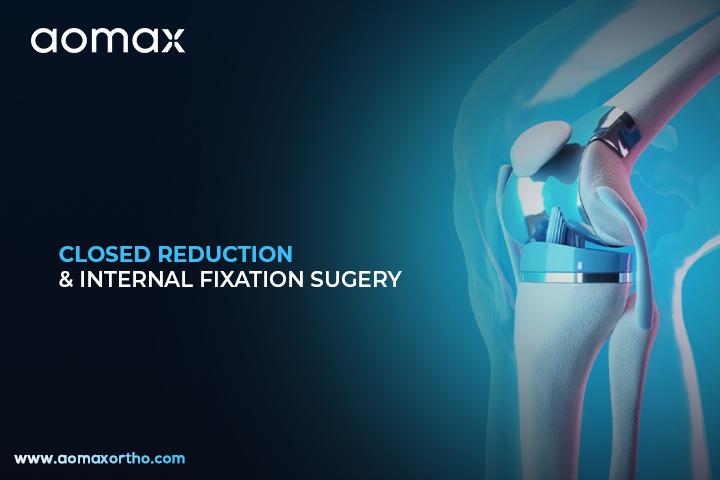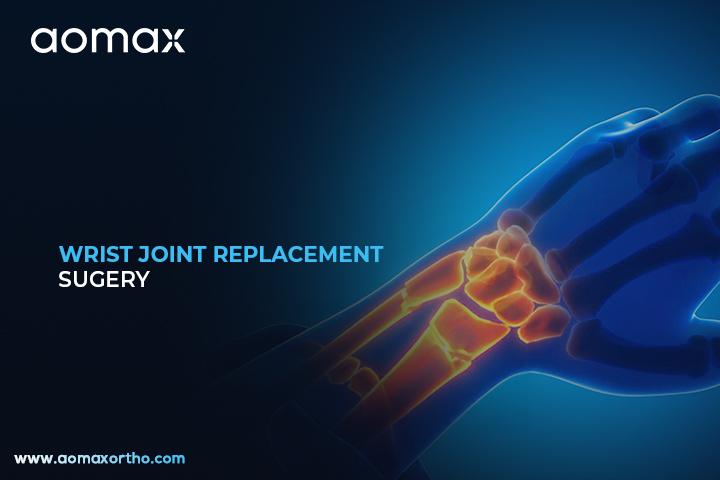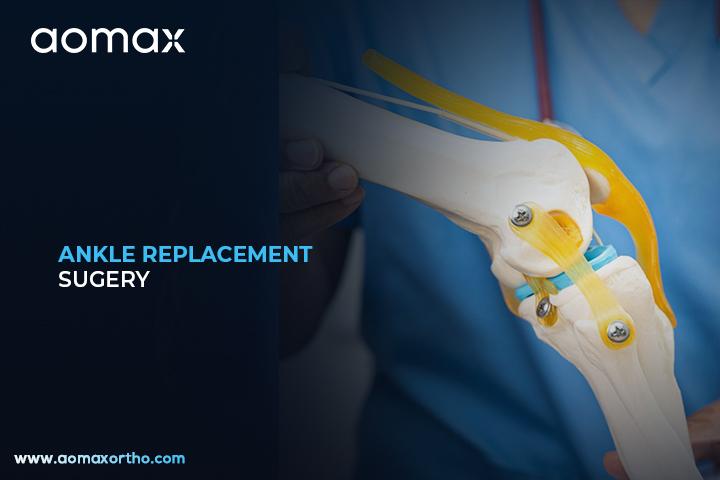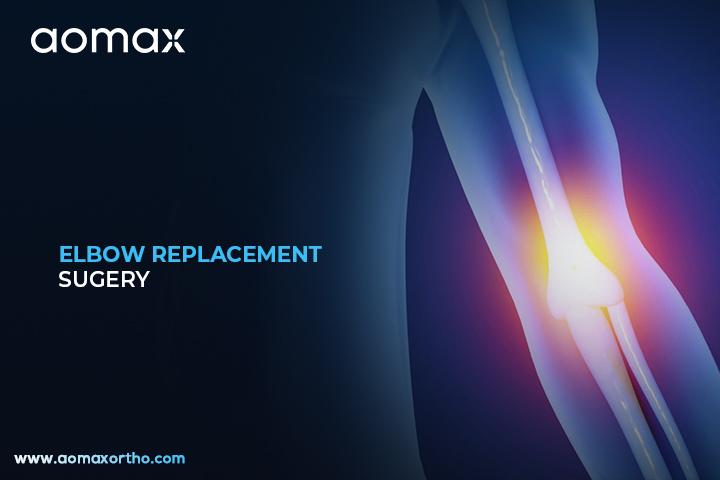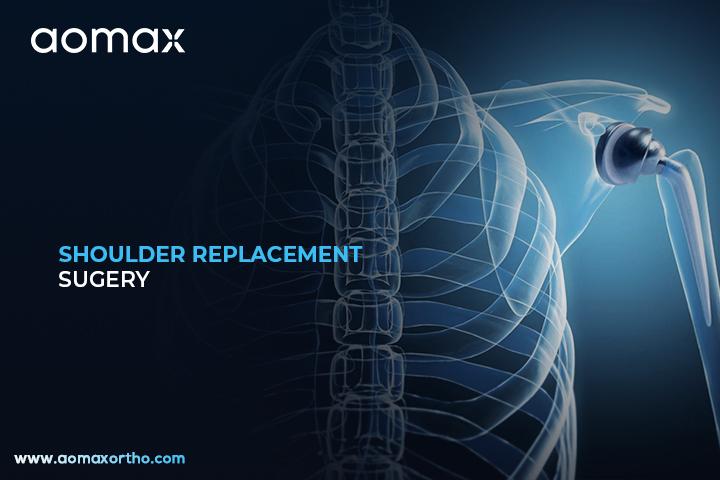Dynamic Hip Screw Fixation – Precision Orthopedic Procedure for Fracture Stabilization
Understanding Dynamic Hip Screw (DHS) Surgery
Dynamic Hip Screw (DHS) Fixation is a surgical procedure used to treat specific types of hip fractures, particularly in older adults. The surgery involves inserting a large screw into the head of the femur (thigh bone) and attaching a side plate to the femoral shaft to stabilize the fracture. This method allows controlled movement of the femoral head, promoting healing and reducing complications.
Procedure Details of DHS Fixation
The DHS procedure begins with a small incision near the hip, through which the surgeon accesses the fractured femur. Using fluoroscopic imaging, a lag screw is precisely inserted into the femoral head, and a side plate is secured along the femoral shaft with multiple screws. This setup permits controlled sliding of the femoral head, facilitating compression at the fracture site, which is essential for healing. The design of the DHS allows for dynamic compression, enabling the bone to heal under the natural stress of weight-bearing activities. This technique is particularly beneficial for patients with osteoporotic bone, as it provides stability and promotes bone healing.
Medical Reasons for DHS Surgery
- To stabilize intertrochanteric and certain femoral neck fractures.
- To allow early weight-bearing and movement after hip fractures.
- To reduce pain caused by unstable fractures.
- To prevent complications such as bone misalignment or delayed healing.
Instruments and Implants Used in DHS Surgery
- Dynamic hip screw plate
- Large lag screw
- Cortical bone screws
- Guide wires
- Drill bits
- Targeting device (jig)
- Bone reduction clamps
- Surgical power drill
- Sterile surgical gloves
- X-ray imaging system (C-arm fluoroscopy)
Countries with Highest DHS Surgery Volume
- United States
- Germany
- United Kingdom
- India
- Japan
Benefits of Choosing DHS Surgery
- Promotes stable fracture healing with controlled compression.
- Enables early mobilization, reducing risk of complications from immobility.
- Minimally invasive compared to other fixation methods.
- Provides strong mechanical support for weight-bearing.
- Reduces hospital stay and improves functional recovery.
Aomax Ortho is a leading manufacturer of Dynamic Hip Screw (DHS) Fixation related products.
Get Connected:
+91 98989 50530 | exports@aomaxortho.com | www.aomaxortho.com
Minimally Invasive Plate Osteosynthesis – Effective Bone Stabilization with Less Trauma
Overview of Minimally Invasive Plate Osteosynthesis
Minimally Invasive Plate Osteosynthesis (MIPO) is a surgical technique used to stabilize fractures with minimal disruption to surrounding tissues. It involves inserting metal plates through small incisions to hold broken bones in place. This method promotes faster healing and reduces the risk of complications compared to traditional open surgery.
The MIPO Procedure Explained
MIPO is performed by making small incisions near the fracture site, allowing surgeons to insert plates without fully exposing the bone. Specialized imaging tools, such as fluoroscopy, guide the precise placement of these plates. The plates, typically made of titanium or stainless steel, are secured with screws to stabilize the fracture. This technique preserves the blood supply to the bone and surrounding tissues, which is crucial for healing. MIPO is particularly beneficial for fractures in areas with limited access or complex anatomy, as it reduces soft tissue damage and scarring.
When is MIPO Needed?
- To treat fractures with minimal soft tissue disruption.
- When traditional open surgery poses higher risks of infection.
- To preserve blood supply to the bone, aiding in faster healing.
- For fractures in complex or hard-to-reach areas.
Key Products Used in MIPO Surgery
- Locking Compression Plates (LCP)
- Titanium Bone Plates
- Low-Profile Cortical Screws
- Cannulated Screws
- Fluoroscopy Imaging Systems
- Bone Reduction Forceps
- Drill Guides for Minimally Invasive Surgery
- Screwdrivers with Minimally Invasive Tips
- Bone Clamps
- Surgical Retractors for Small Incisions
MIPO Surgery – Top Performing Nations
- United States
- Germany
- Japan
- South Korea
- France
Why Choose MIPO?
- Reduces soft tissue damage and scarring.
- Lowers the risk of infection due to smaller incisions.
- Maintains blood flow around the fracture, promoting faster healing.
- Enables earlier mobilization and rehabilitation.
- Minimizes postoperative pain and hospital stay.
Aomax Ortho is a leading manufacturer of Minimally Invasive Plate Osteosynthesis (MIPO) related products, offering high-quality plates and instruments designed to support effective fracture treatment.
Get Connected:
+91 98989 50530 | exports@aomaxortho.com | www.aomaxortho.com
Intramedullary Nailing – Precision Orthopedic Procedure for Fracture Fixation
Overview of Intramedullary Nailing
Intramedullary nailing is a surgical technique used to treat fractures of long bones such as the femur, tibia, or humerus. A sturdy metal rod is placed inside the bone’s central canal to align and stabilize the broken bone. This method helps healing and allows early movement in many cases.
How Intramedullary Nailing Is Performed and Supported by Surgical Tools?
The procedure is done under general or regional anesthesia using fluoroscopic X-ray guidance to ensure correct alignment. The surgeon begins by inserting a guidewire through a small incision into the marrow canal of the fractured bone. If needed, surgeons use reamers to enlarge the canal before inserting the nail. Once the nail is placed, locking screws are inserted proximally and distally to fix it securely. Instruments like insertion handles, targeting devices, reamers, guidewires, drills, and locking screws are essential throughout the operation. This stabilizes the bone internally and minimizes soft tissue damage, promoting faster recovery.
Clinical Indications
- To stabilize diaphyseal fractures of long bones (e.g., femur, tibia, humerus)
- In complex fractures such as comminuted, segmental, or displaced injuries
- For fractures due to osteoporosis or pathological conditions
- When non-surgical treatment fails or is impractical for healing
- To allow early weight-bearing and mobility, especially in lower limbs
Implants and Instruments Used
- Intramedullary Nails (femoral, tibial, humeral types)
- Locking Screws / Bolts
- Guidewires (ball-tipped or cannulated)
- Canal Reamers
- Insertion Handle / Nail Driver
- Targeting (Aiming) Device
- Cannulated Drill Bits
- Bone Tap Instruments
- Nail Extraction Tools
- Reduction Aids (e.g. percutaneous joysticks, Schanz screws)
Global Leaders in This Surgery
- United States
- Germany
- India
- China
- Brazil
Why Surgeons Prefer This Method
- High mechanical stability across fracture site
- Minimal soft tissue disruption and preservation of blood supply
- Strong axial, rotational, and length stability via locked fixation
- Enables early mobilization and shorter hospital stays
- Reduced risk of nonunion or malalignment
- Lower infection risk compared with external fixation
- Supports faster functional recovery and physical rehabilitation
Aomax Ortho is a leading manufacturer and exporter of orthopedic implants and instruments, including stainless steel and titanium products designed for surgeries like intramedullary nailing. Aomax is committed to global quality standards (ISO, CE, WHO-GMP) and serves partners in over 85 countries, with its manufacturing units based in Ahmedabad, Gujarat, India
Get Connected:
+91 98989 50530 | exports@aomaxortho.com | www.aomaxortho.com
External Fixation Surgery – Effective Treatment for Severe Bone Injuries
Introduction to External Bone Fixation
External fixation is a surgical method used to stabilize broken bones using a frame outside the body. The frame is connected to the bone through pins or wires inserted through the skin. This technique helps keep the bone aligned while it heals.
The Surgical Process Explained
The surgeon starts by inserting stainless steel or titanium pins or wires into the bone fragments through small incisions in the skin. These are connected to an external frame made of carbon fiber or stainless steel and fixed using clamps and connecting rods. Power drills, drill sleeves, coupling clamps, and tensioning devices are used during construction to ensure rigidity. The frame may be adjusted during healing to correct bone length or rotational alignment. Instruments such as external fixation frames, Schanz screws, connecting rods, clamps, and tensioning devices, support precise construction. This method is especially helpful when surrounding soft tissues are too fragile for internal fixation.
Indications for This Procedure
- Treatment of severe open fractures where the risk of infection is high
- Management of complex, unstable limb fractures requiring external support
- Bone lengthening or deformity correction procedures
- Temporary stabilization in polytrauma cases before definitive surgery
- Preservation of soft tissues when internal implants are contraindicated
Instruments Required
- External Fixator Frame
- Schanz Screws
- Connecting Rods
- Clamps for External Fixator
- Carbon Fiber Rods
- Pin-to-Rod Coupling Clamps
- Drill Sleeves
- Tensioning Devices
- Bone Drilling Machine
- Wire Fixation Bolts
Where External Fixation Is Most Common
- United States
- Germany
- India
- China
- Brazil
Key Advantages of External Fixation
- Allows stabilization of bone while preserving and protecting surrounding soft tissues
- Enables wound access and dressing changes without disturbing the fracture alignment
- Reduces risk of deep infection in contaminated or open fractures
- Permits gradual adjustment of bone alignment during recovery
- Supports correction of limb length discrepancies or bone deformities
- Provides rapid stabilization in emergency trauma scenarios
Aomax Ortho is a leading manufacturer of External Fixation related products, offering high-quality surgical tools such as frames, screws, rods, and tensioning devices that meet international standards and support orthopedic care globally
Get Connected:
+91 98989 50530 | exports@aomaxortho.com | www.aomaxortho.com
Closed Reduction and Internal Fixation – Advanced Technique in Orthopedic Trauma Care
CRIF – A Basic Surgical Outline
Closed Reduction and Internal Fixation (CRIF) is a method to fix broken bones without large surgical incisions. The surgeon first realigns the bone without opening the skin, then internal devices like screws or nails are inserted to stabilize it. CRIF helps bones heal accurately while minimizing trauma.
How CRIF is Performed?
Closed Reduction and Internal Fixation is performed using imaging tools such as fluoroscopy to guide the realignment of fractures. Once properly aligned, surgeons insert internal implants—such as screws, plates, or intramedullary nails—to maintain stable bone positioning. Specialized orthopedic instruments, often made of stainless steel or titanium, are used to place and secure these devices. The process uses small skin entries rather than a full open incision, preserving surrounding tissue. Advanced tools like cannulated screws and locking plates are standard for effective fixation. This combination promotes accurate healing and quicker return to function.
When is CRIF Needed?
- To treat displaced fractures where the bone is misaligned but soft tissue and skin remain intact.
- For complex or unstable fractures that require precise stabilization.
- To reduce surgical trauma and lower infection risk through minimal tissue dissection.
- To support faster recovery and enable earlier mobility, especially in active or elderly patients.
Surgical Tools and Implants Used in CRIF
- Bone Plates (e.g., dynamic compression and locking plates)
- Bone Screws (cancellous, cortical, cannulated screws)
- Locking Plates
- Locking Screws
- Interlocking Nails (e.g. proximal femoral nails)
- Kirschner Wires (K-Wires) and guide wires
- External Fixator Instruments (initial stabilization sets)
- Trauma Instrument Set (forceps, clamps)
- External Fixation Instrument Set
- Orthopedic Power Drill & Nail Instrument Set
Countries with Highest CRIF Volumes
- United States
- Germany
- India
- Japan
- Brazil
Surgical Outcomes and Benefits of CRIF
- Minimally invasive approach preserves soft tissues and reduces blood loss.
- Internal fixation provides strong stability, allowing accurate bone alignment and union.
- Lower infection rates compared to open surgeries due to small entry points.
- Enhanced precision using fluoroscopic guidance and modern implant design.
- Enables early weight-bearing or motion, speeding rehabilitation and reducing complications.
Aomax Ortho is a leading manufacturer of Closed Reduction and Internal Fixation related instruments and implants, offering high-quality stainless steel and titanium products trusted by orthopedic surgeons worldwide
Get Connected:
+91 98989 50530 | exports@aomaxortho.com | www.aomaxortho.com
Open Reduction and Internal Fixation – Effective Surgical Solution for Complex Fractures
What is Open Reduction and Internal Fixation?
Open Reduction and Internal Fixation (ORIF) is a surgical procedure used to treat broken bones that cannot heal properly with casting alone. The surgery involves realigning the bone fragments and securing them with metal hardware such as plates, screws, or rods. This method helps restore the bone’s normal function and alignment, promoting faster and more reliable healing.
Surgical Technique and Procedure Details
In ORIF surgery, the surgeon first makes an incision near the fracture site to expose the broken bone. Specialized tools such as bone clamps and retractors are used to carefully hold tissues aside for clear access. The surgeon manually aligns the bone fragments into their correct position, which is called “open reduction.” Then, metal implants like plates, screws, or intramedullary nails are secured to the bone to stabilize the fracture internally. These implants are often made of titanium or stainless steel for strength and compatibility with the body. The hardware maintains proper alignment and supports healing, allowing early movement and reducing the chance of improper bone union.
When is ORIF Necessary?
- To treat complex fractures that cannot heal properly with casting alone.
- To stabilize bones that are displaced or misaligned after injury.
- To allow early movement and reduce complications from prolonged immobilization.
- To repair fractures in weight-bearing bones like the femur or tibia that need strong internal support.
Surgical Equipment and Devices for ORIF
- General Orthopedic Instrument Set – Includes tools like bone clamps, forceps, and chisels essential for fracture management.
- DHS/DCS Instrument Set – Used for dynamic hip and compression screw fixation.
- Intramedullary Nails (IM Nails) – Metal rods inserted into the bone marrow cavity to stabilize fractures.
- Bone Plates – Flat metal pieces fixed onto bones to maintain alignment.
- Bone Screws – Used to secure plates or other fixation devices to bones.
- External Fixators – Devices applied outside the body to stabilize bones during healing.
- Orthopedic Power Tools – Including drills and saws for precise surgical procedures.
- Orthopedic Drill Bits – Specialized bits for creating holes in bones for screw placement.
- Bone Grafting Materials – Used to promote bone healing in certain fractures.
- Sterile Surgical Drapes and Gloves – Essential for maintaining a sterile surgical environment.
Top Nations by ORIF Surgery Volume:
- United States
- Germany
- Japan
- India
- Brazil
How ORIF Improves Patient Outcomes:
- Provides strong internal support for proper bone healing.
- Allows patients to begin physical therapy earlier.
- Reduces the risk of bone malunion or nonunion.
- Minimizes long-term disability caused by improperly healed fractures.
- Helps restore the normal function and alignment of the injured limb.
Aomax Ortho is a leading manufacturer of Open Reduction and Internal Fixation (ORIF) related products, providing high-quality surgical implants and instruments.
Get Connected:
+91 98989 50530 | exports@aomaxortho.com | www.aomaxortho.com
Wrist Joint Replacement – Comprehensive Orthopedic Surgery for Joint Repair
Overview of Wrist Joint Replacement
Wrist joint replacement surgery, also known as wrist arthroplasty, involves removing the damaged radiocarpal joint and replacing it with a prosthetic implant to reduce pain . It is most often offered when wrist arthritis or prior surgical treatments fail to relieve chronic stiffness or loss of motion. The artificial joint uses metal and plastic components to mimic a healthy wrist and help restore flexibility
Restoring Mobility Through Modern Wrist Arthroplasty
A precise incision is made on the back of the wrist to expose the radiocarpal joint. Damaged cartilage and bone are carefully removed, and the surgeon trial-fits radial and carpal components of the prosthesis to ensure correct sizing. Using alignment guides or jigs, the final implant components—usually cobalt-chromium stems and a high-density polyethylene spacer—are fixed with screws or bone cement depending on implant design. Surgeons use specialized instruments such as rasps, bone cutters, and trial handles to shape the bone and seat the implant. Once the joint is sealed and motion tested, soft tissues are closed in layers, and the wrist is immobilized in a splint or cast. This helps reduce postoperative swelling and supports the newly implanted joint
Conditions Treated by Wrist Replacement
- Severe wrist pain and reduced motion caused by advanced osteoarthritis.
- Chronic wrist stiffness and bone destruction due to rheumatoid arthritis.
- Post-traumatic arthritis following a distal radius or carpal fracture.
- Failed wrist fusion or reconstructive surgery leading to persistent symptoms.
- Wrist instability or collapse from avascular necrosis of carpal bones
Surgical Instruments and Implants Used
- Wrist Arthroplasty Prosthesis Kit (radial and carpal implant components)
- Trial Implant and Alignment Jig Set
- Small Fragment T-Locking Plate (used for distal radius fixation) – Locking Plates category
- Cancellous and Cortical Bone Screws (for fixation) – Bone Screw category
- Bone Cement (polymethylmethacrylate) for cemented implants
- Electric or Battery-Operated Orthopedic Drill (for precise bone preparation)
- Rasp and Bone Cutter Instruments (part of general orthopedic instrument set)
- Arthroscopy Shaver and Irrigation Pump (for soft-tissue debridement around the wrist)
- Digital Tourniquet Machine (to control bleeding during surgery)
- Surgical Retractor Set (for soft-tissue exposure)
Global Wrist Replacement Surgery Leaders
- United States (largest wrist arthroplasty market globally)
- Germany (rapidly expanding implant adoption, strong registry data)
- United Kingdom
- China (emerging market with increasing procedure volume and demand)
- Canada (widespread arthroplasty adoption with pooled surgical outcomes)
Positive Outcomes of Wrist Arthroplasty
- Significantly reduces or eliminates pain from arthritic or damaged wrist joints.
- Preserves wrist range of motion, unlike fusion, improving daily function.
- Enhances grip strength and hand dexterity needed for activities like typing or cooking.
- Decreases dependency on long-term anti-inflammatory and analgesic medications.
- Improves overall quality of life by enabling light manual tasks without stiffness or fatigue.
- Avoids rigid wrist position, offering better long-term ergonomics for tasks and posture.
Aomax Ortho is a leading manufacturer and exporter of orthopedic implants, instruments, and wrist-related surgical kits, including locking plates, screws, bone drills, and trial sets often used in wrist joint replacement surgery
Get Connected:
+91 98989 50530 | exports@aomaxortho.com | www.aomaxortho.com
Ankle Replacement – Effective Treatment for Damaged Ankle Joints
Overview of Ankle Joint Replacement
Ankle replacement surgery involves removing a damaged ankle joint and replacing it with an artificial one. It helps restore movement and reduce pain caused by arthritis or injury. This surgery is an option when other treatments, like medication or physical therapy, no longer work well.
Surgical Procedure Explained
Ankle replacement surgery starts with the surgeon making an incision around the ankle to access the joint. Damaged bone and cartilage are carefully removed to prepare the area for the implant. The artificial ankle joint is usually made of metal and plastic components that mimic natural movement. Specialized tools are used to position and secure the implant precisely in place. The surgeon then closes the incision with stitches or staples and applies a bandage or cast to protect the area. This surgery helps improve joint function, reduce pain, and increase mobility.
Medical Indications
- Severe ankle arthritis causing chronic pain and stiffness
- Ankle joint damage due to trauma or fractures
- Loss of ankle function affecting daily activities
- Failure of conservative treatments like medication or braces
Tools and Implants Used
- Ankle prosthesis implants (metal/plastic)
- Surgical saws and drills
- Bone cement or fixation screws
- Surgical retractors
- Sterile surgical gloves
- Ankle braces or immobilizers (post-surgery)
- Surgical sutures or staples
- Tourniquet system
- Sterile drapes and gowns
- Irrigation systems for wound cleaning
Global Centers of Ankle Replacement Surgery
- United States
- Germany
- United Kingdom
- Canada
- Australia
Key Benefits of the Surgery
- Provides pain relief in severely damaged ankles
- Restores near-normal ankle motion and function
- Allows patients to return to daily activities with less discomfort
- Reduces the need for long-term pain medications
- Improves overall quality of life by enhancing mobility
Aomax Ortho is a leading manufacturer of ankle replacement surgery-related products, providing high-quality implants and surgical tools used worldwide.
Get Connected:
+91 98989 50530 | exports@aomaxortho.com | www.aomaxortho.com
Elbow Replacement Surgery – Advanced Orthopedic Solution for Joint Pain
Introduction to Elbow Joint Replacement
Elbow replacement surgery involves replacing a damaged or arthritic elbow joint with an artificial implant. This procedure is considered when other treatments, such as medication or physical therapy, have not relieved pain or improved function. The goal is to restore movement and reduce discomfort in the elbow.
Conducting an Elbow Joint Replacement
During the surgery, the surgeon removes the damaged surfaces of the humerus (upper arm bone) and ulna (forearm bone). Specialized tools are used to prepare the bones for the implant, which may be made of metal and plastic. The artificial joint is then carefully positioned to restore the natural hinge motion of the elbow. Surgeons may use bone cement or press-fit techniques to secure the implant. The procedure typically takes a few hours and requires a hospital stay. Post-operative rehabilitation is essential for optimal recovery.
When Is Elbow Replacement Necessary?
- Severe osteoarthritis causing persistent pain and limited movement
- Rheumatoid arthritis leading to joint deformity and dysfunction
- Complex fractures that cannot be repaired with other methods
- Failed previous elbow surgeries resulting in ongoing problems
Essential Tools and Implants for Elbow Surgery
- Total Elbow Prosthesis
- Bone Cement (e.g., PMMA)
- Surgical Retractors
- Orthopedic Drill Systems
- Bone Saw
- Surgical Screws and Plates
- Sterile Surgical Gloves
- Surgical Sponges
- Post-operative Elbow Brace
- Irrigation System
Top Countries Performing Elbow Joint Replacements
- United States
- Germany
- United Kingdom
- Canada
- Japan
Why Choose Elbow Joint Replacement?
- Alleviates chronic elbow pain
- Enhances range of motion and joint flexibility
- Improves quality of life by restoring daily function
- Reduces the need for long-term medication
- Facilitates quicker recovery compared to joint fusion
Aomax Ortho is a leading manufacturer of elbow replacement related products, providing high-quality implants and surgical instruments worldwide.
Get Connected:
+91 98989 50530 | exports@aomaxortho.com | www.aomaxortho.com
Shoulder Replacement Surgery – Restoring Mobility and Comfort
Overview Of Shoulder Replacement Surgery
Shoulder replacement surgery is a procedure where a surgeon removes parts of a damaged shoulder joint and replaces them with artificial implants. It is commonly performed when arthritis, injury, or joint wear causes persistent pain and limited movement. This operation aims to restore shoulder function and reduce discomfort.
Precision in Motion – How Shoulder Replacement Surgery Works
During the procedure, the damaged humeral head is removed and replaced with a metal ball fixed on a stem that fits into the upper arm bone. The socket (glenoid) may also be resurfaced or replaced with a plastic cup component. Surgeons use tools like bone saws, orthopedic drills, reamers, and trial prosthesis kits to prepare the bone and fit the implant. Devices such as surgical retractors, a cement gun, and trial implants help ensure precise fit and alignment. In many cases. Antibiotic bone cement is often used to secure the implant in place. Recovery is supported by postoperative physical therapy to restore range of motion and strength.
Indications for Surgery
- Severe osteoarthritis causing constant pain and restricted shoulder movement
- Rotator cuff tear arthropathy where both tendon damage and joint degeneration occur
- Rheumatoid arthritis deteriorating the shoulder joint
- Avascular necrosis leading to bone collapse in the humeral head
- Failed previous shoulder surgery or instability requiring revision
Surgical Instruments and Implants
- Humeral head prosthesis (metal ball and stem)
- Glenoid component (polyethylene socket implant)
- Bone cement for implant fixation
- Orthopedic power drill
- Surgical bone saw
- Trial prosthesis sizing kit
- Surgical retractors
- Cement gun for controlled delivery
- Cannulated screws for fixation
- Shoulder positioner to stabilize the limb
Leading Nations by Procedure Volume
- United States
- Germany
- United Kingdom
- Canada
- Australia
Clinical Advantages
- Significantly reduces chronic shoulder pain, improving daily comfort
- Restores range of motion, allowing for activities like reaching and lifting
- Enhances muscle strength and joint stability after recovery
- Reduces reliance on long-term pain medications and injections
- Improves overall quality of life by enabling better sleep, function, and independence
Aomax Ortho is a leading manufacturer of shoulder replacement surgery-related products, offering high-quality implants and surgical instruments trusted by orthopedic surgeons globally.
Get Connected:
+91 98989 50530 | exports@aomaxortho.com | www.aomaxortho.com

